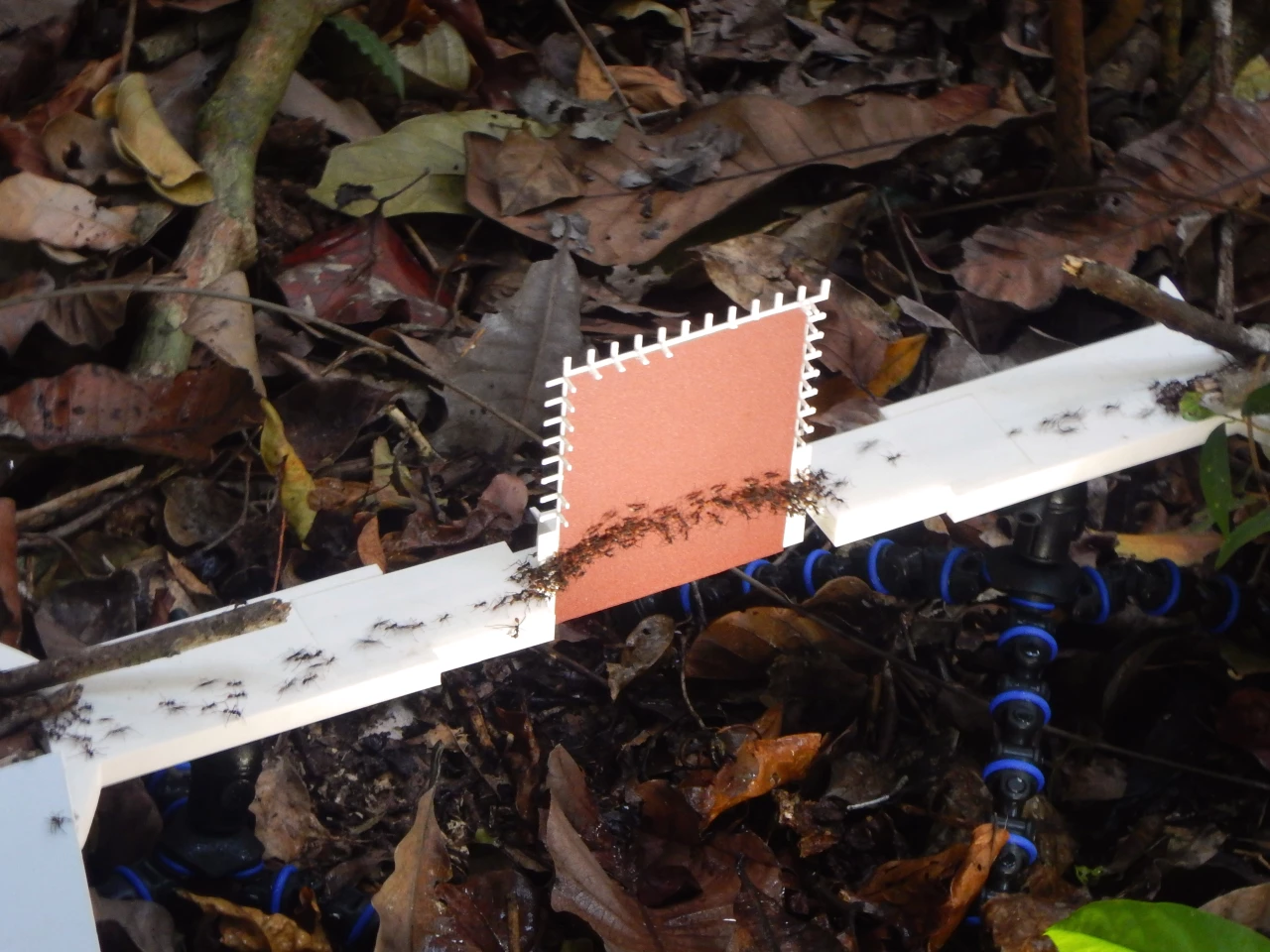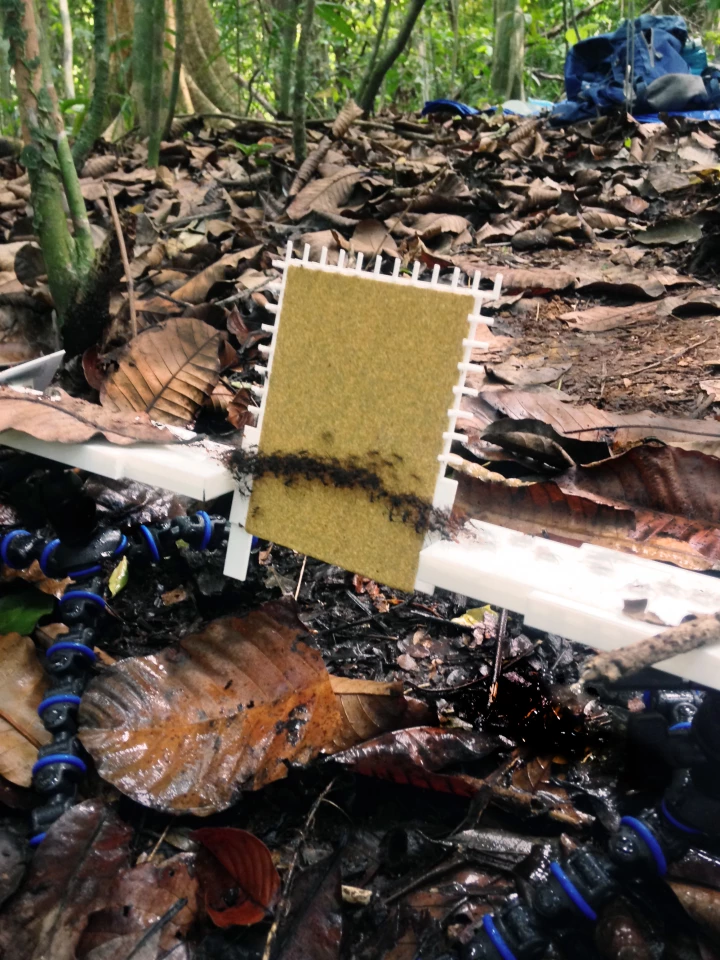The success of a colony of ants is one big exercise in collaboration, with the insects known to share all manner of responsibilities, from forming conveyor belts for food transport to construction of their nest. Scientists have now discovered a fascinating new example of this teamwork, finding army ants join their bodies together to form scaffolds that stop nest mates from tumbling down steep terrain.
The discovery was made by an international team of scientists from the Max Planck Institute of Animal Behaviour, Macquarie University, New Jersey Institute of Technology and the Santa Fe Institute, who trawled the floor of a Panamanian forest in search of army ants. These critters are known to combat rough terrain by joining their bodies together to form bridges and highways for easy passage as they forage for food, and through experiments in the field, the authors have now uncovered another type of self-assembled megastructure.
By redirecting the traffic trails of the army ants, the team created a scenario where they were made to crawl across a tilting platform that could be angled anywhere between 20 and 90 degrees from horizontal. To make sure that every one of them made it across, the ants could be seen joining their bodies together to form a scaffold structure, which acted as a safety net to prevent other ants from tumbling down the face of the platform.

“We show that scaffolds rarely form on slopes less than 40 degrees, while steeper inclines generate faster-growing and more massive structures," says co-lead author Dr Matthew Lutz, from the Max Planck Institute of Animal Behaviour. "Scaffolds are also more likely to form when trails are transporting a large number of workers carrying heavy prey items. Once the scaffolds are in place, the number of falling ants drops to near zero, even when the ants are forced to traverse across completely vertical slopes.”
The scientists built a theoretical model to explain the way the scaffolds are constructed and what causes the ants to take that action, which centers around their individual response to the terrain. The team says that when the ants sense that they are starting to slip, they are moved to join the megastructure, and are more likely to join it the higher the rate of their slippage.

“Our model closely matches the experimental results, without requiring the ants to communicate with each other or assess the size of the structure,” explains co-lead author Dr Chris Reid from Macquarie University's Department of Biological Sciences. “Army ants are small, blind and have no leaders or blueprints to direct them, yet their ability to generate sophisticated group-level behavior from simple local-level rules is extremely valuable to many engineering fields, including swarm robotics.”
The researchers say the self-assembled structures could also help in the design of self-healing materials and biofabrication that rely on a minimum of sensing and information processing.
The research will be published in the journal Proceedings of the National Academy of Sciences.
Source: Macquarie University via Scimex







